
Japanese rice is soft, shiny and eat as a staple food for Japanese.It matches almost any side dishes. Japanese traditional cultures and societies ties strongly with rice planting. Middle era of 新潟【NIIGATA】prefecture’s KOSHI-HIKARI is the most famous ,top brand.
1. Feature of Japonica rice
2How to eat Japanese rice ;it matches almost any side dishes including Japanese, Western,Chinese style.
3.History of rice planting in Japan.It ties strongly with seasonal traditional events or spirit of Japanese.
4.Middle era of 新潟【NIIGATA】prefecture’s KOSHI-HIKARI is the most high quality top brand.
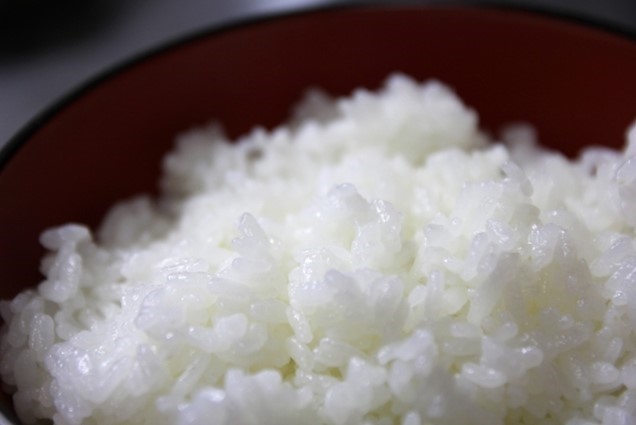
1.Feature of Japonica rice
Japonica rice is round-shaped, soft and more sticky while Indica rice is long shaped and used for curry and Unlike Indica rice used for curry and pilaf,Japonica rice is eaten as it is as the staple food for Japanese.
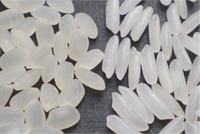
left;Japonica rice /right;Indica rice
White rice or brown rice?
People prefer polished rice than unpolished brown rice except some people prevent health very much.
Brown rice includes much vitamin D or nutritions as you know, but white well polished one is much more delicious. People call fresh steamed white rice 銀シャリ【GIN-SYARI】literally mean “Silver Buddha’s bone” (⇦Most Japanese people use the word without being conscious of the meaning so much^^;)and grateful it.
| 栄養成分 | 含有量 | 主な働き | 他の食品で摂取する場合 |
|---|---|---|---|
| エネルギー | 222kcal | 体の組織を動かす | ハンバーガー1個270kcal |
| 糖質 | 47.6g | 体のエネルギー源 | ひじき100g |
| たんぱく質 | 3.9g | 血や肉など体の基本を作る | 牛乳130cc |
| 脂質 | 0.75g | 体のエネルギー源 | 食パン1/3枚 |
| ビタミンB1 | 0.05mg | 体の調子を整える | キャベツ100g |
| ビタミンB2 | 0.02mg | 美肌を作る | 大根100g |
| ビタミンE | 0.3mg | 細胞や血管の若さを保つ | ごま 小さじ8杯 |
| カルシウム | 3mg | 骨や歯を丈夫にする | トマト1/3個 |
| 鉄分 | 0.15mg | 貧血防止 | とうもろこし1/3 |
| マグネシウム | 6mg | 肩こりなどを防ぐ | アスパラ5本 |
| 亜鉛 | 810μg | 皮膚の再生を補助 | ほうれん草1/3束 |
| 食物繊維 | 0.6g | 便秘などを防ぐ | セロリ50g |
Usually, we cook rice with electric rice cookers.
▶︎How to cook delicious Japanese rice by rice electric cooker.

2.How to eat Japanese rice? It matches almost any side dishes including Japanese, Western,Chinese style.
Basic style of Japanese meal is called 一汁三菜【ICHI-JYUU-SAN-SAI】;Rice plus one soup and
three dishes. One main dish and two side dishes.
People eat rice and side dishes alternately.
Take various nutrition in the well balance might be the reason Japanese meal is most healthy in the world .
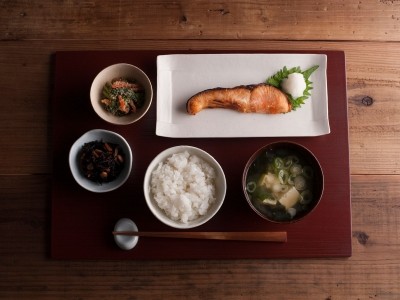
Japanese style curry is eaten with Japonica rice instead of indica one.
We call this dish Curry rice, but sauce of Japanese curry is different from Indian curry.
Imported from England marine.
It’s more thick and mild like hot brown stew.
One of almost Japanese favorite menus.
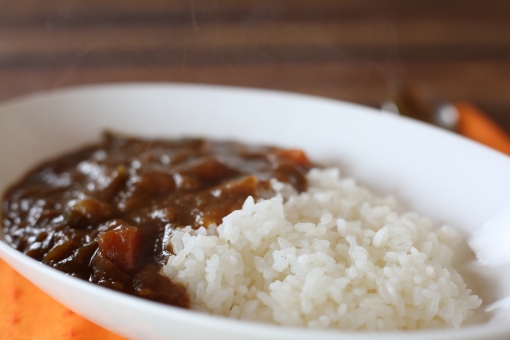
Japanese Rice also matches with western dishes like hamburger or steak.
Usually, you can select bread or rice when you order at restaurant.
.jpg)
Pilaf is also made in Japonica rice in Japan.

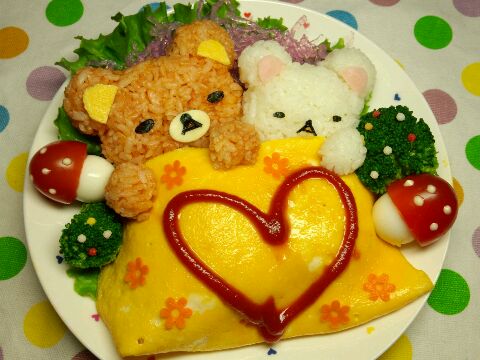
At Chinese restaurant , Japanese rice is served.

In Japanese restaurant, usually 炒飯【CYAA-HAN】Chinese style fried rice is cooked by Japonica rice.
It is said to fry fried rice with strong fire to make rice in flattery.

O-NIGIRI or O-MUSUBI literally mean hold or tied things. If you want to enjoy the taste of rise as itself ,simple rice ball ingredient inside it and covered by NORI weed dried paper is recommended.
鮭【SAKE or SHAKE】piece of grilled salmon,梅干【UMEBOSHI】dried plum pickles(be careful as it is sour!),シーチキンマヨネーズ【SEA CHICKEN MAYONNAISE】Tuna flake mixed with mayonnaise are popular.
Japanese eat O-MUSUBI rice balls frequently as a meal that can easily carry as lunch or a little snacks.

3.Rice came from northeastern China and the Korean Peninsula, and rice cultivation gradually began to take place throughout Japan. As a result, rice cultivation techniques grow and the Yayoi culture develops.
Most of the events held at the shrine are about rice cultivation, such as a prayer festival to pray for good harvests and a New Year’s Festival to thank the harvest.
The tribute is stored in rice and other agricultural products and local specialties.
In the feudal society of the Edo period, the size of daimyo in each place was expressed by the amount of rice available at 石高 [KOKUDAKA].
Rice cultivation forms an organization such as labor and management, rice is a symbol of power or has the value of money as it is now, and the origin of Japan and rice is inseparable from here until the latter half of the Edo period. There is no relationship.
4. History of Koshihikari
The characteristic of Koshihikari, which shines in the country of Koshi, is its deliciousness. It has become synonymous with delicious rice, including the beauty of cooked gloss, strong stickiness and aroma.
Koshihikari has a strong scent and flavor of rice when put in your mouth. Koshihikari is produced all over Japan from northern Tohoku to southern Kyushu. Especially famous is Koshihikari from Uonuma in Niigata Prefecture. Due to the favorable climatic conditions, Koshihikari from Uonuma has been continuously gaining the special A rank of the highest taste rating for decades.
Koshihikari has a strong taste and aroma inherent in rice, so it is more compatible with dishes that are more seasoned than thin Japanese dishes. It is a rice with a strong taste that can be beaten by dishes with a strong taste such as hamburgers and tonkatsu. In addition, it is not suitable for cooking rice cooked rice such as vinegared rice or fried rice because it has a lot of stickiness thin taste and aroma in the rice itself. Although cultivation is not easy, Koshihikari makes up one-third of the rice produced throughout Japan, confirming its overwhelming taste.
Has been awarded “Special A” certification and the highest rating in Japan for 25 consecutive years. Koshihikari, which has the highest “special A” in the 2008 rice taste ranking, is located in Niigata Prefecture, except for Shimoetsu.
In around 2008, Uonuma Koshihikari’s provisional price was about 5,000 to 6,000 yen higher per bale (60 kg) compared to general Koshihikari from Niigata Prefecture


